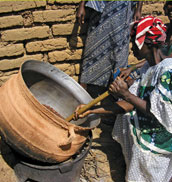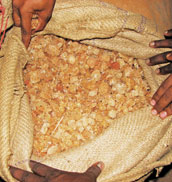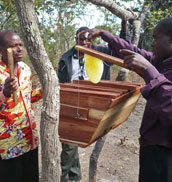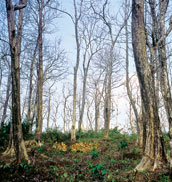Improving livelihoods through
smallholder and community forestry |
 |
Harvesting forests
to reduce poverty
Some 240 million people live in or around the dry forests of Sub-Saharan Africa.
Most depend on the forests for their livelihoods and survival, yet millions remain trapped in poverty. A major research project, funded by the Swedish International Development Cooperation Agency (Sida), is investigating how non-timber forest products (NTFPs) could make a greater contribution to their welfare. An independent review suggests that the project is on the way to achieving some of its key goals. more
|
 |
Making the most of Burkina’s gum harvest
Africa’s dry forests are rich in wild game, medicinal plants, resins and other non-timber forest products (NTFPs), which have the potential to reduce poverty. But how? more |
 |
Sweetening the deal for Zambia’s honey industry
For thousands of rural households in Zambia, honey is an important source of income.
But a variety of factors, including lack of a coherent government policy, mean that the country is failing to realise the full potential of honey and beeswax to reduce poverty. A CIFOR research project is shedding light on how it could.
more |
 |
Shifting the balance of power
Local communities are often threatened by the activities of outsiders, and all too frequently their needs and opinions are ignored. This often leads to conflict. The ‘Levelling the Playing Field’ project has explored how local communities can compete on an equal footing with more powerful groups, such as plantation companies and government ministries. According to an independent evaluation, the project has successfully developed a system of mediation that can shift the balance of power in forested areas. more |